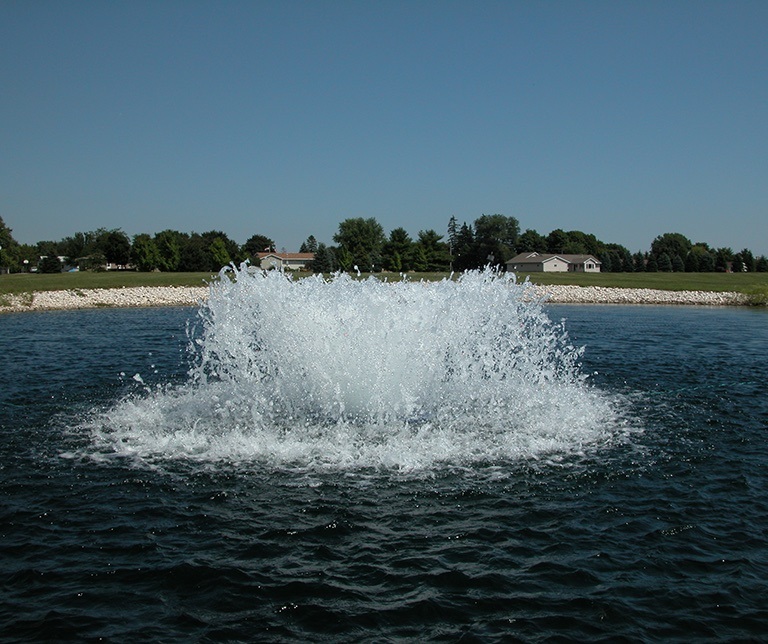The Ultimate Guide: How to Select the Perfect Pond Aeration System

Pond aeration plays a crucial role in maintaining the health and beauty of aquatic ecosystems. It involves increasing oxygen saturation in water bodies, which is vital for the survival of fish and beneficial microorganisms. Natural oxygenation is often insufficient in stagnant water bodies like ponds, especially in deeper areas where water movement is minimal. This leads to lower oxygen levels, adversely affecting the pond’s ecological balance.
Aeration can enhance oxygen levels and facilitate the breakdown of harmful substances like excess nutrients and gases trapped in the sediment. This process helps reduce algae growth, eliminate foul odors, and prevent fish kills due to low oxygen levels. Moreover, aeration contributes to a more stable and healthier pond environment by improving water circulation and temperature stratification. For pond owners, this means clearer water, healthier fish, and an overall more vibrant and sustainable aquatic ecosystem.
But with so many options available, choosing the right pond aeration solutions can be overwhelming. This guide will help you navigate the complexities of selecting the perfect system for your pond.
Understanding Pond Aeration
Before diving into the types of pond aeration system, it’s important to understand why aeration is crucial. In a natural setting, ponds receive oxygen from surface water movement and aquatic plants. However, in many artificial or managed ponds, these biological processes are insufficient to maintain healthy oxygen levels. Aeration systems artificially introduce oxygen into the water, promoting a healthy ecosystem.
Assessing Your Pond’s Needs
The first step in selecting an aeration system is understanding your pond’s specific needs. Key factors include:
- Size and Depth: Larger and deeper ponds require more powerful aeration systems.
- Pond Shape: Irregularly shaped ponds might need multiple aeration points.
- Aquatic Life: Ponds with fish or marine organisms have higher oxygen demands.
- Climate: In colder climates, aeration helps prevent pond freeze-over, which can harm aquatic life.
Types of Pond Aeration System
There are several types of pond aeration system, each suited for different pond conditions:
-
Surface Aerators
Surface aerators work by agitating the pond’s surface. They are ideal for shallow ponds (less than 6 feet deep) as they effectively oxygenate the upper layers of water. Examples include paddlewheel aerators and fountain aerators.
-
Bottom Diffused Aerators
These are the most effective for deeper ponds. Air is pumped from a shore-based compressor to diffusers on the pond’s bottom. The rising air bubbles help circulate water and introduce oxygen throughout the pond.
-
Solar-Powered Aerators
Solar-powered aerators are an eco-friendly option. They are particularly useful in remote areas where electrical power is unavailable or expensive. However, their performance can be limited on cloudy days or at night.
-
Windmill Aerators
Windmill aerators are another eco-friendly solution, using wind power to operate an air compressor. Like solar aerators, their effectiveness depends on environmental conditions—in this case, wind availability.
Power Source and Installation
Consider the power source and installation requirements:
- Electrical Systems: Most aerators require an electrical power source. Ensure that your site can accommodate this.
- Solar and Wind Systems: These systems require appropriate environmental conditions and might need professional installation.
- Installation Complexity: Some systems, like bottom-diffused aerators, may require professional installation due to their complexity.
Maintenance and Cost Considerations
Maintenance and cost are also important factors. While surface aerators are generally less expensive, they may require more frequent maintenance. Bottom-diffused aerators, although potentially more costly upfront, tend to be more energy-efficient and require less maintenance.
Additional Tips
- Consult a Professional: If unsure, consulting with a pond management professional can provide tailored advice.
- Permits and Regulations: Check local regulations to ensure your aeration system complies with environmental and safety standards.
- Seasonal Adjustments: Be prepared to adjust your aeration strategy based on seasonal changes. For instance, during winter, reducing aeration can help maintain a warmer water temperature near the pond bottom, which is crucial for fish survival.
Conclusion
Selecting the right pond aeration system is a balance of understanding your pond’s unique characteristics and the capabilities of different aeration technologies. Whether you choose a surface, bottom-diffused, solar-powered, or windmill aerator, the key is to ensure that it meets the specific needs of your pond. Proper aeration leads to a healthier pond ecosystem, benefiting not just the aquatic life but also enhancing the beauty and value of your property.
By considering the size and depth of your pond, the type of aquatic life it supports, your local climate, and the maintenance requirements of different systems, you can make an informed decision that ensures the vitality of your pond for years to come. Remember, a well-aerated pond is a thriving pond.